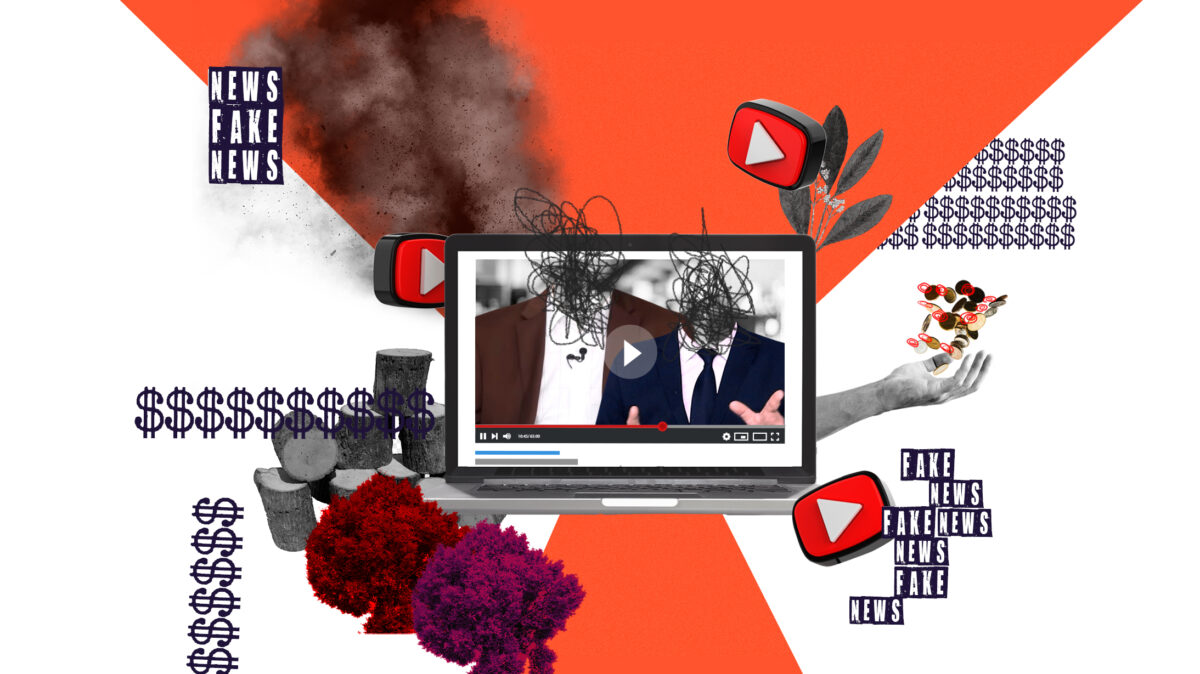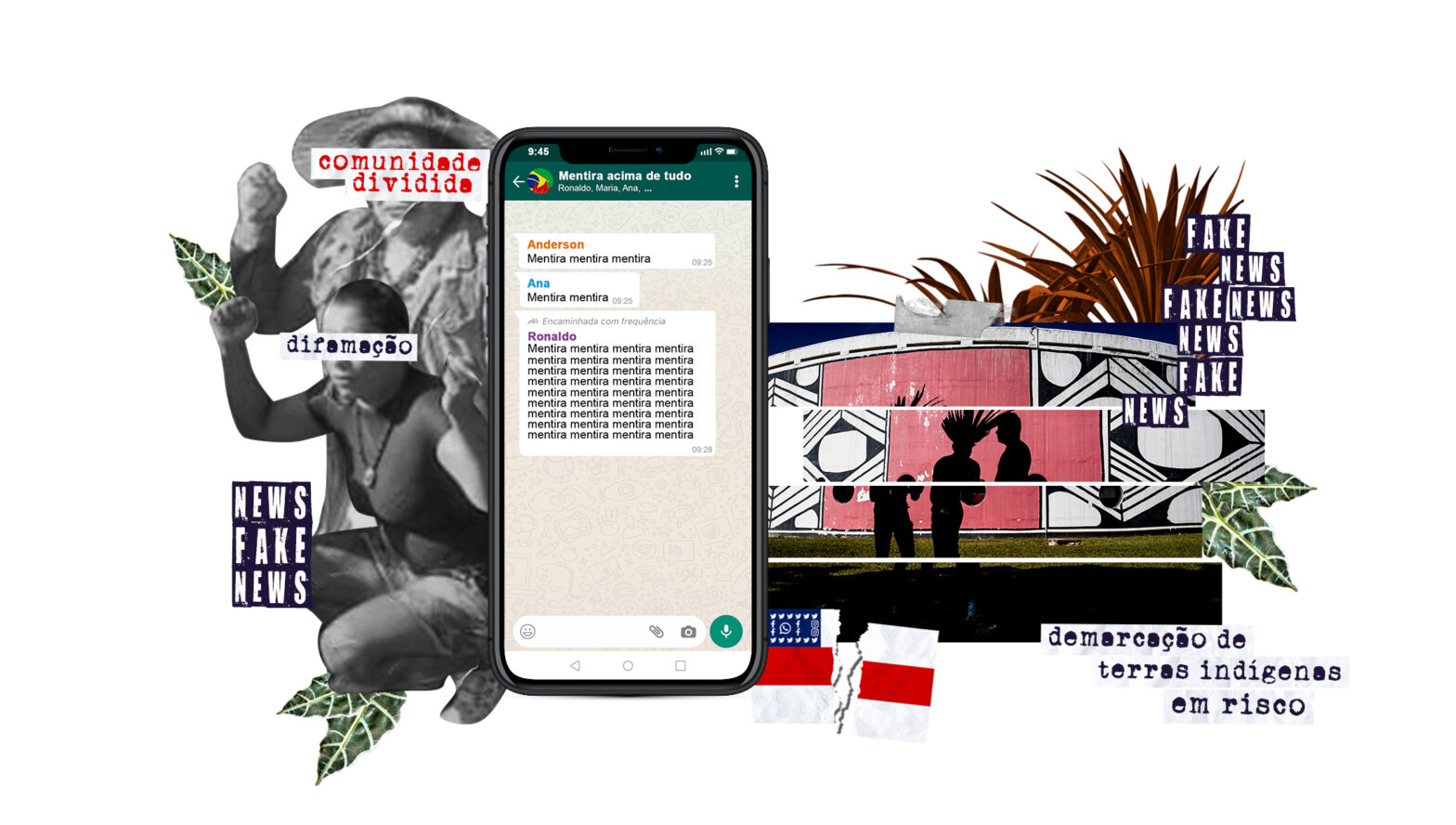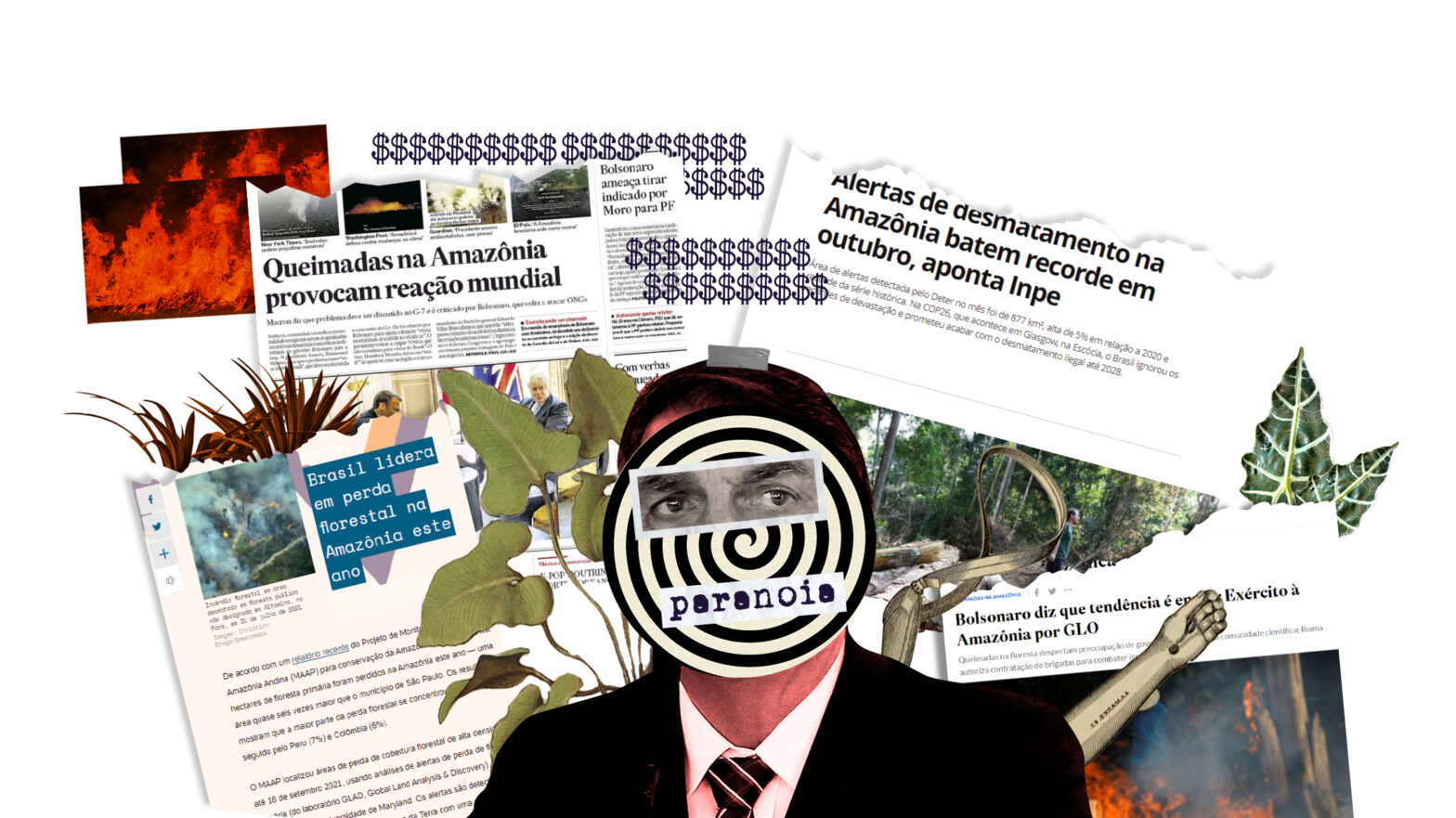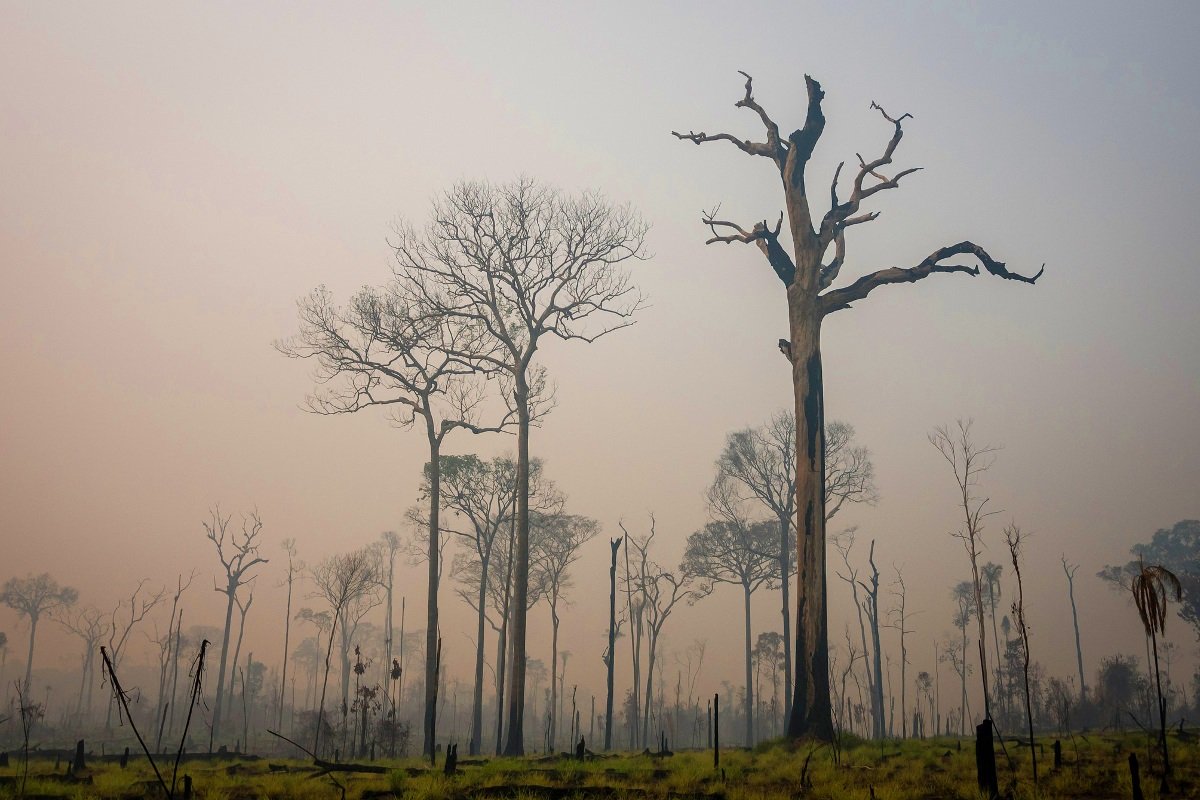Powered by a surfeit of clicks and remunerated by monetization tools, YouTube channels with a right-wing bias are making an effort to spread disinformation about the Amazon, climate change and Brazilian socio-biodiversity. One of the main sources of disinformation transmitted by these channels is the Planalto Palace in Brasília.
This is the result of the analysis by the project “Amazonas: Lies Have a Price,” which mapped over 400 videos on YouTube, with around 70 million views and 67 million interactions.
Speeches with lies or distorted truths by President Jair Bolsonaro and his sons Eduardo and Flávio, with 5.2 million followers, and cabinet members are reproduced by an army of pro-government channels that say they are doing independent journalism and have thousands of followers. On this team, denialist and revisionist YouTubers are also aligned with the President’s discourse. Of the analyzed channels, five are on the list of the 14 channels sanctioned by the Superior Electoral Court (TSE) for allegations of disseminating disinformation about the electoral system. Despite being in the sights of the TSE, Folha Política, Te atualizei, Vlog do Lisboa, Ravox and Emerson Teixeira continue to be online.
“YouTube, without a doubt, is the lead protagonist of disinformation, it’s the production hub. In an analogy to drug trafficking, it’s like the apps are the message runners (“aviõezinhos”) and YouTube is the crack house,” says Leonardo Nascimento, a researcher of disinformation networks and the coordinator of the Digital Humanities Laboratory at the Federal University of Bahia. “It’s disinformation production on an industrial scale.”
Commissioned by this report, the disinformation research company Novelo used algorithms to automate and analyze the data to find the most-viewed videos since January 2019 on channels that are favorable to Bolsonaro and that had a socio-environmental theme. The list was then verified, discarding the videos that only mentioned the keywords but did not address the subject, such as videos that used the word Amazon but were related to the name of a television program.
The project “Amazon: Lies Have a Price” asked YouTube about the analyzed videos. In response, platform representatives stated that some were removed and others demonetized, without specifying how many or which ones. False information should be taken offline, but YouTube has not shown itself to be effective at filtering out the disinformation used to earn money, being a target of critics.
In January of this year, in an open letter to YouTube CEO Susan Wojcicki, more than 80 fact-checking organizations across the world called YouTube “one of the major conduits of online disinformation and misinformation worldwide.” The document says that the actions taken against fake news have been insufficient and suggests a series of recommendations to combat disinformation spreaders, such as demonetizing content.
The Bolsonaros on mining on Indigenous lands
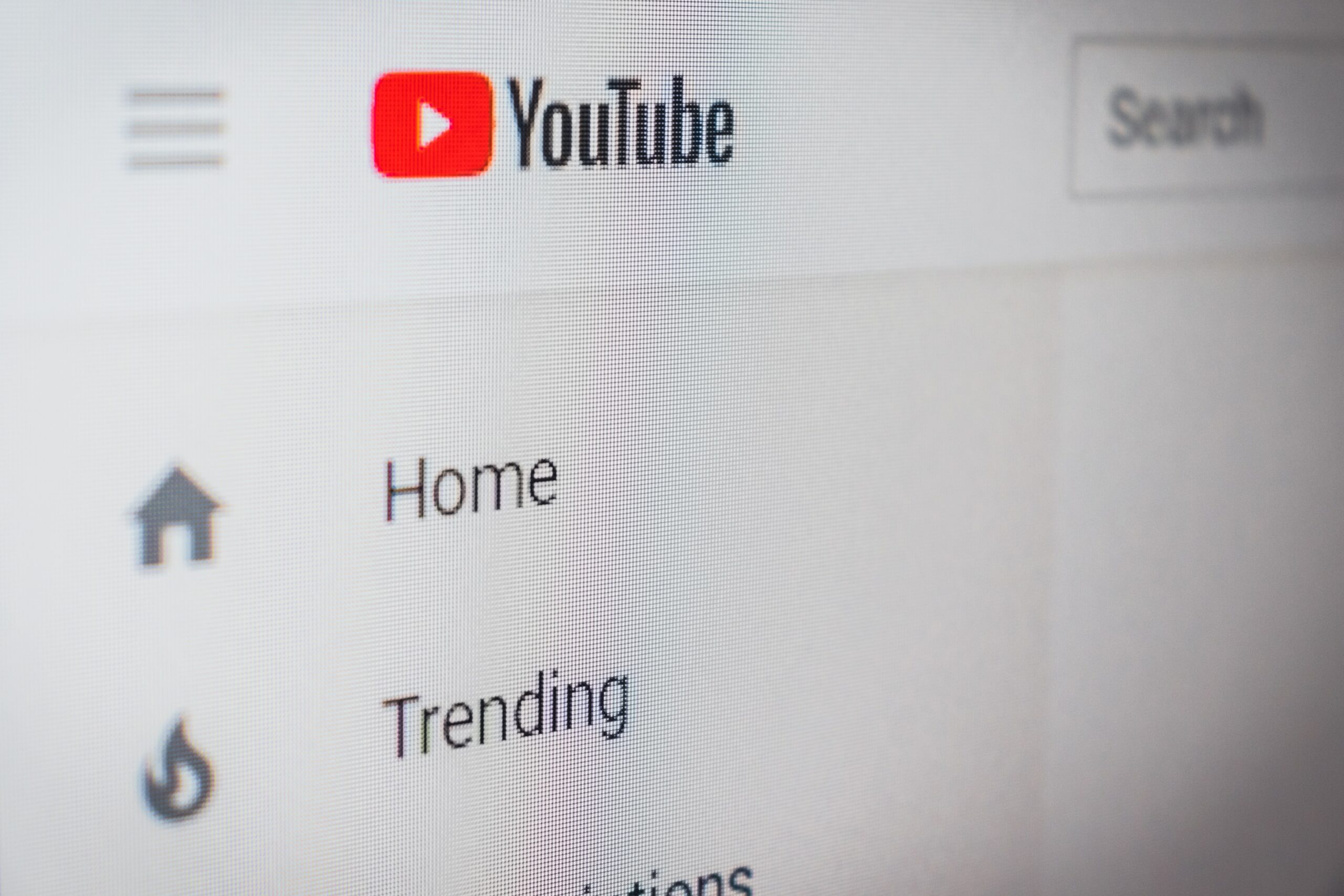
With 3.6 million subscribers to his YouTube channel, President Jair Bolsonaro is one of the top spreaders of disinformation about the socio-environmental topic and the Amazon on the platform. The president has 32 videos on his own channel, which add up to 4,626,547 views. The majority of them are Bolsonaro’s weekly live streams, which are also transmitted on Facebook.
The content generated by the President supplies other channels that replicate and reinforce his discourse. The name Bolsonaro appears in 177 titles of the videos analyzed.
On August 8, 2019, in one of his weekly live streams, Bolsonaro hosted two Indigenous people from the state of Roraima accompanied by Ricardo Salles, the then minister of the Environment, and took the opportunity to defend mining on Indigenous lands. “Some people use Indians like sheep, to demarcate more and more land. To isolate them as if they were just a thing out there, a Neanderthal,” Bolsonaro said in a prejudiced way.
The Bolsonaro administration has not demarcated any Indigenous land, increasing the lack of safety in the field and, consequently, the number of invasions, murders, and threats to communities. The video posted on Bolsonaro’s official channel has reached 52,560 views. A clip from the video of Bolsonaro hosting the Indigenous people was also posted on the channel Folha Política, garnering another 218,356 views.
In another video with over 74,000 views, the President posted a speech by his national secretary of Land Management, Luiz Antonio Nabhan Garcia, during a visit to Roraima. “Our Indian brothers and sisters from across Brazil want to work, plant, mine, in sum, to be like us,” Bolsonaro wrote in the video description. A large part of the Yanomami Indigenous land is in the state of Roraima, and has been invaded by over 20,000 illegal miners, according to the Yanomami Hutukara Association.
Surrounded by representatives of Indigenous communities, Garcia, who is the former president of the Rural Democratic Union (UDR), said he was “translating what the Indigenous communities from across Brazil think” and that “the Indigenous peoples want to mine gold and diamonds on their lands, within the law.” This goes against what the national organizations that represent the Indigenous peoples of the country defend, such as the Articulation of the Indigenous Peoples of Brazil (APIB). One of the statements about the escalated violence in Yanomami territory says that Apib “has come public to declare extreme indignation and concern in the face of escalated violence committed by illegal miners against Indigenous communities of the Yanomami Indigenous Land, in Roraima, and the negligence with which the situation has been treated by the public authorities.”
In February 2020, the federal government introduced Law Project (PL) 191/20 with the goal of regulating the exploitation of mineral, water and vegetal resources on Indigenous lands. PL 191, as it became known, came back into the limelight with another piece of fake news from the government, which claims that potassium production for fertilizers depends on the law’s passing, when 89% of the potassium deposits are located off Indigenous lands, according to researchers at the Federal University of Minas Gerais. The Federal Public Ministry, in a statement, affirms that the PL is unconstitutional. The Brazilian Mining Institute, an association of large-scale mining companies, has also positioned itself against the law, for the reason that PL 191 “is not appropriate for the ends that it is working towards.”
Flávio Bolsonaro, President Bolsonaro’s first son and a senator with the Liberal Party of Rio de Janeiro (PL-RJ), posted a pro-mining speech by his father, the President, on his channel with over 380,000 subscribers. This speech was delivered at the 2021 opening of a wooden bridge in São Gabriel da Cachoeira, in the state of Amazonas. The trip cost more than double the amount used to construct the bridge, but this information did not appear in the video, with around 68,000 views.
CHECK OUT: Who is the “new Indian” of the “new Funai” in the Bolsonaro administration?
Eduardo Bolsonaro, the President’s second son and federal deputy with of the Liberal Party of São Paulo (PSL-SP), posted a pro-mining video with over 464,000 views on his channel that uses the voice of Richard Rasmussen, a biologist, presenter, and ambassador for Brazilian Ecotourism, to lend the veneer of a specialist to defend the political stance of the government that he is a part of. Interviewed by the president’s son, Rasmussen said, “It would be stupid to not take advantage of the protected Amazon, there’s a lot of wealth there,” when an area equivalent to half the state of Sergipe was destroyed in the Amazon in 2021 alone. “When we talk about environmental issues, we need to understand that there is a political intention behind the orchestrated spread of fake news on this subject. It’s also a political maneuver. The use of strategic disinformation as a war tactic is nothing new,” says Nina Santos, a post-doctoral candidate in digital democracy at the National Institute of Science and Technology.
For the lawyer and researcher at the University of Oxford, Caio Machado, who is also the president and co-founder of the Vero Institute, big business owners, politicians, ranchers, illegal land grabbers and miners, in addition to the content creators themselves, represent the majority of the beneficiaries of misleading narratives. “What brings in money on the platforms is the user’s attention span, views, shares, clicks, comments, likes…that’s what [boosts popularity]. There are many ways to benefit. There’s a whole disinformation click market for engagement. This market ends up being convenient and has a near symbiotic relationship with disinformation.”
According to YouTube’s rules, a channel needs to have at least 1,000 subscribers and accumulate over 4,000 views in the previous 12 months to be remunerated with the monetization tool on the platform. Meeting these requirements and following the platform’s other guidelines can result in compensation ranging from $0.25 to $4.50 per thousand views, or around R$1.30 to R$24 with the current exchange rate.
“YouTube, without a doubt, is the lead protagonist of disinformation and the production hub. In an analogy to drug trafficking, it’s like the apps are the message runners (“aviõezinhos”) and YouTube is the crack house.“
Leonardo Nascimento, researcher of disinformation networks and professor at the Federal University of Bahia (UFBA)
Network of channels aligned with the government
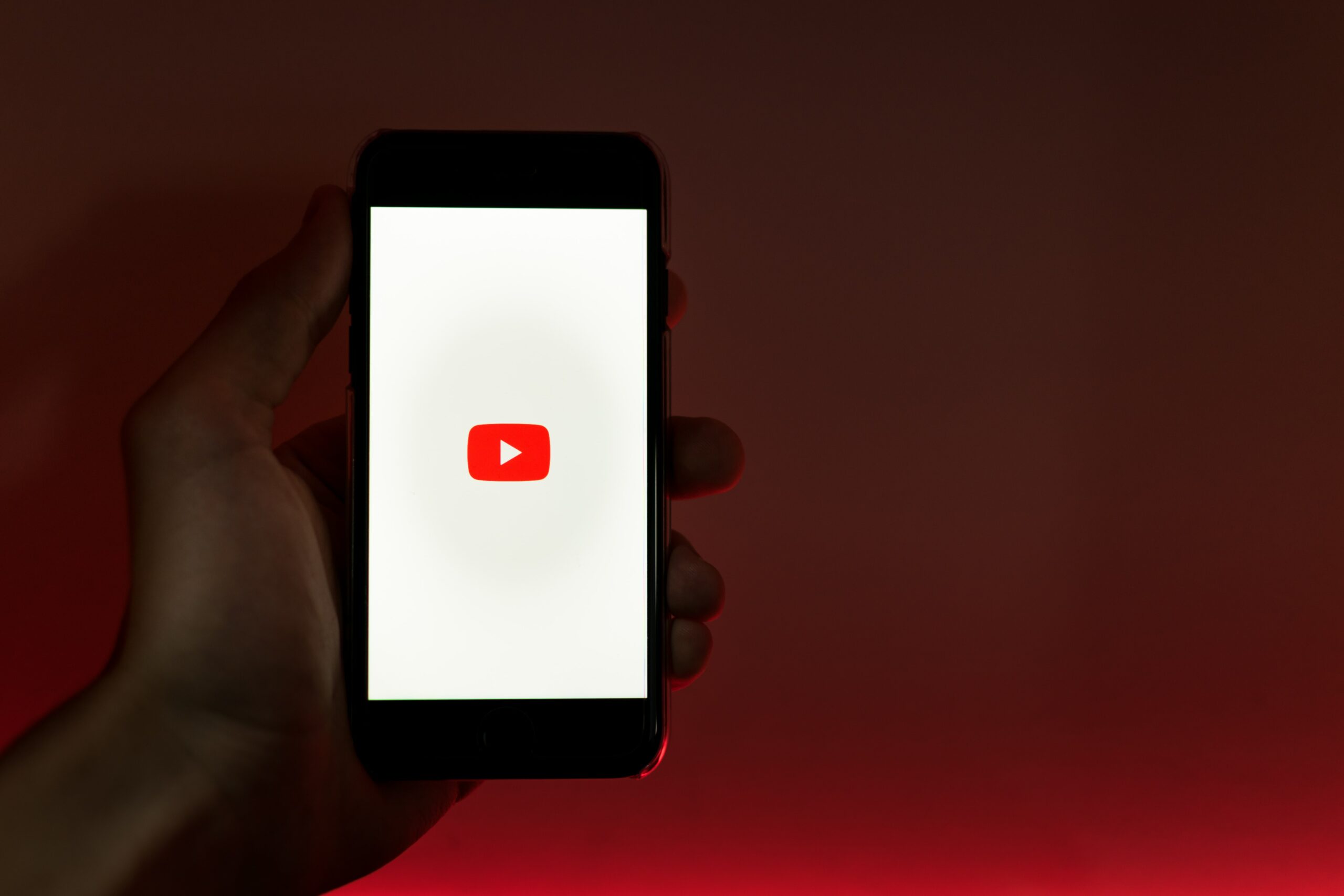
“The role of the people [who like and share the videos from these channels] is essential to making this content go viral and reach the largest number of people, but we can’t compare the role that they have with the role of an orchestration to spread fake news, the disinformation operations. Now we’re talking about another level of organization that has to do with spreading standardized content that is being shared by various online actors,” says researcher Nina Santos.
Denialist discourse gains the potential to turn viral with a boost from Bolsonaro and his supporters. In addition to creating content for these channels through his speeches, the President also acts in another area by helping share the content they produce.
“The channel makes the video, the President goes there and responds to it. He causes a gigantic wave with his response. A simple interest in the narrative can yield direct revenue for the channels, such as financing for agricultural companies, or indirectly by these videos being shared and monetized by YouTube. And generally it’s everything at the same time,” says Caio Machado, of the Vero Institute.
With 2.6 million followers, the channel Folha Política, investigated during the Federal Supreme Court (STF) inquest on the organization of antidemocratic acts, is one of the main spreaders of disinformation about the Amazon. In general, the videos distributed by the channel are created by public broadcasters, like TV Brasil and TV Câmara. In the first 30 seconds of the videos, the viewer is presented with the following message: “Watch the video and click ‘like’ if you support Bolsonaro’s government.”
The videos show supposedly patriotic messages that repeat elements that are common among Bolsonaro supporters, such as the importance of the Amazon for the misleading and fictitious theory about the “defense of national sovereignty” or conspiracy theories that say that, under the guise of preservation, there are foreign governments allied with international NGOs that are interested in dominating the Amazon and putting an end to this “sovereignty.”
The channel also reproduces disinformation and conspiratorial discourse by General Augusto Heleno (Cabinet of Institutional Security), federal Deputy Coronel Chrisóstomo (União Brasil-RN), and the Army commander General Edson Pujol.
One video from the commander of the Army reproduced by the channel reached over 800,000 views. “So the unsuspecting who insist on defending the plans of the Amazon are not fooled, soldiers from the army of Caxias will always be attentive and vigilant, ready to defend and drive out any type of threat,” says Pujol. Another video, from August 2019, surpassed 1 million views and suggested that deforestation is just invented discourse, when data from the government itself shows that Brazil broke three consecutive records of deforestation during the first three years that Bolsonaro was in power. The subtitles attribute a quote to the President: “It’s not for nothing that other countries are trying to win the information war so that we will lose our sovereignty over this area.”
Folha Política also made some noise by distributing a video posted by Bolsonaro resurrecting a quote by deceased Deputy Enéas Carneiro, of the now-defunct Prona party. “The problem is that, for example, in the Yanomami region, not on the surface but underground, there are immeasurable riches. The problem is that the future of the planet lies there in the Amazon forest. It is from there that energy to move the world will come. This is what is hidden behind the ecological outcry.”
Another common ruse in the videos with socio-environmental themes from the analyzed channels is to confuse the viewer with fake or decontextualized data, or even by distorting the results of studies. “There is the appropriation or distortion of scientific data that appears to be, or even really is true. Fake news is supported by quotes and knowledge that are already circulating in society and this is very important to lend credibility,” says researcher Nina Santos.
Sound bites with false or denialist information are the main tactic used in videos produced by Brasil Paralelo, with 2.44 million subscribers on YouTube, a standout on the analyzed list because of its videos that spread a documentary dedicated to this topic. “The Amazon is not burning, agriculture is not the root cause of the environmental ills in Brazil,” says the professor and political scientist Christian Lohbauer, a 2018 vice-presidential candidate, in a video that is less than 50 seconds long and has over 100,000 views.
Studies by Brazilian scientists show that deforestation has been the primary agent for fires in the Amazon, not the dry periods.
“The fires are due to, above all, illegal deforestation to harvest wood and clear grazing land on stolen public land. Soy has also become a factor in recent years,” says researcher Sonaira da Silva of the Laboratory of Geoprocessing Applied to the Environment (LabGama) at the Federal University of Acre in an interview with InfoAmazonia.
An exclusive survey conducted by InfoAmazonia between July and September 2021 showed that the highest incidences of forest fires in territories with isolated Indigenous peoples occurred in the Inãwébohona Indigenous Land in Tocantins, and in the Xingu National Indigenous Park in Mato Grosso, which comprise over half of the heat centers among the demarcated lands with isolated Indigenous peoples. Farming activity neighbors both territories.
In another video with over 50,000 views, the controversial anthropologist Edward Luz, who has already been detained for attempting to impede the work of the Brazilian Institute of the Environment and Renewable Natural Resources (Ibama), states, “NGOs in Brazil use Indigenous people to reap later financial benefits.” This argument is common among Bolsonaro supporters who work in communication.
Videos by Christian Loubauer and Edward Luz were posted for the purpose of sharing a feature-length documentary available online in its entirety on the channel. The documentary has reached nearly 2 million views.
“Fake news is supported by quotes and knowledge that are already circulating in society and this is very important to lend credibility.”
Nina Santos, post-doctoral candidate in Digital Democracy at the National Institute of Science and Technology
The channel Foco no Brasil, with 2.69 million followers, reached 384,000 views with a video in which the president states that the Amazon doesn’t catch fire “because it’s moist.” “Not even with a match and alcohol,” said Bolsonaro to a group of supporters at the gates of the presidential residence Palácio da Alvorada, seen at the timestamp of 11’56” in the video. Official government data contradicts the President.
The channel Te Atualizei, with 1.44 million subscribers and sanctioned by the TSE, absolves Bolsonaro of the elevated rate of deforestation in the Amazon. In a video posted in August 2019, it attributes the fires to the “natural dry season phenomenon,” a version refuted by researchers.
With the title “The truth about the Amazon,” casual language and editing with visual effects, the video has over 437,000 views. It’s worth noting that, at the time, the deforested area in the Amazon was 9,762 km² between August 2018 and July 2019, according to Inpe, an increase of 29.5% in relation to the same period in previous years.
The channel RC Interativa also promotes the Bolsonarista discourse that there is an international conspiracy regarding the Amazon.
Regulation loopholes
For researcher Nina Santos, the mechanics of self-regulation on the platforms (i.e. the fact that they set their own rules to combat untruthful content) are not enough to fight this system of disinformation. “We end up stuck in the hands of these companies [that decide] what we can and cannot say in public debate. We need some kind of external tool,” says Santos.
The Law Project (PL) 2.630, known as the Fake News Law, was passed by the Chamber of Deputies and awaits voting by the Senate. It could fill a regulatory void and bring solutions, like exposing debates to moderation strategies and removing hate speech, according to Machado.
“We manage it. It’s like drug trafficking, you fight it. You have to make it costly for whoever wants to do it, adjusting legislation and regulation. Disinformation operates under some mechanisms, not only the production of the story, but the distribution, narrative, the mechanisms to go viral … the law has to consider all of these aspects.”
On the other hand, Machado highlights one article of the law that addresses traceability as a major (but not the only) weakness in the document. “For this article to work, we’ll need to retain everybody’s conversations to find out who started a trend. And, even with that, with “copy paste” you can start a new conversation and lose the thread. It’s very aggressive because this promotes the mass storage of conversations, which is dangerous.”
YouTube says that videos that break rules are excluded from or lose monetization
The report forwarded YouTube the links to the videos in this article and, after analysis by the platform, some of them were deleted and others were removed from the monetization program. However, not all the videos listed were part of the monetization program, the platform pointed out.
In a statement, YouTube says that it created rules regarding the spread of information on COVID-19. It also updated the monetization policies and ads and banned the remuneration of denialist content about climate change. Yet for videos that deny deforestation and fires, the drivers of the climate crisis in Brazil, the directive apparently does not apply. Read the entire statement here.
The statement further says that the platform relies on electronic and human analysis to find videos that do not comply. From July to September of 2021, it removed 6 million videos globally and at least 420,000 in Brazil. Reports from users resulted in the removal of 233,000 videos. According to YouTube, the content published on the platform needs to follow community guidelines that, among other practices, prohibit the dissemination of disinformation. If they violate or approach what they call the “policy limit,” the videos can be removed from the monetization program or the channel can even be shut down. “Disinformation erodes trust with viewers and advertisers,” says a portion of the statement, which attributes the quote to YouTube product director Neal Mohan.
The Other Side
InfoAmazonia contacted all the channels whose videos were cited and the politicians whose video statements were mentioned in this report.
Those responsible for the channels “Jair Bolsonaro,” “Flavio Bolsonaro,” “Eduardo Bolsonaro,” “Ravox” and “Vlog do Lisboa;” the Empresa Brasil de Comunicação, responsible for TV Brasil; the minister of the Cabinet of Institutional Security of the Presidency, General Augusto Heleno; the secretary of Land Management of the Ministry of Agriculture, Luiz Antônio Nabhan Garcia; Brazilian Army General Edson Pujol; federal Congressman Coronel Chrisóstomo; Professor Christian Lohbauer; and biologist Richard Rasmussen did not respond to requests for clarification.
Brasil Paralelo
In a statement sent for this report, Brasil Paralelo said that “the statement that the documentary Cortina de Fumaça [Smokescreen] being on the list of videos ‘with disinformation about the Amazon’ is a lie.”
“All of the documentaries by Brasil Paralelo undergo a long creation process and extensive research on the topics before beginning production. Cortina de Fumaça presents facts that are confirmed by data and reports, with sources quoted in the film itself.”
The production company states that they always seek out qualified interviewees, and justified the participation of Christian Lohbauer and Edward Luz due to their academic trajectories: Lohbauer has a master’s and doctorate in political science from USP, and is a professor and specialist in pesticides, with an extensive and recognized career in the agricultural industry. He participated in the founding of and ran as a federal vice-presidential candidate for the Novo party in the 2018 elections. Edward Luz has a bachelor’s in social sciences from the University of Brasília, a master’s in social anthropology and a doctorate in social sciences from the Center for Research and Postgraduation on the Americas and Caribbean from the same institution.
“The two interviewees are among others who bring a large range of diversity of opinions and worldviews to approach the topic. Additionally, Indigenous leaders, founders of NGOs and journalists, among many other important names for a qualified and plural debate were heard from.”
The production company Brasil Paralelo confirmed that its channel is not monetized and never was, and questioned the criteria used by this report for the project Amazon: Lies Have a Price.
“Questions about a piece of information or data shown in the work are always welcome, but must be presented in an objective way and not with generic and ideological accusations of ‘disinformation.’ In this sense, it is important to remember the recent judicial decision in favor of Revista Oeste, also irresponsibly accused of fake news. If the same practice occurs in relation to Brasil Paralelo, we will take measures for the damage to be repaired.” Read the entire statement (in portuguese).
Emerson Teixeira
Professor Emerson Teixeira, of the channel “Emerson Teixeira” on YouTube, said that he himself checks the content of his videos “based on facts and not opinions” and that he does not receive money from the channel. “I am a public servant and do not depend on the channel,” he said via email. About the TSE decision that suspended the monetization of his channel and other pro-Bolsonaro channels for posting content that is offensive to democracy and the electoral system, Teixeira states that he never published “fake news” and the proof of his offense was never shown to him. “I am politically persecuted for having supported the president,” he stated.
TV Câmara
The Chamber of Deputies, responsible for the operation of TV Câmara, said in a statement that the content shown on television and on the YouTube channel “can be reproduced and shared in its entirety and non-commercially distributed via any means of communication” and that “editing or altering the content” is not permitted. About the content of parliamentary addresses, the press secretary states that “according to Article 53 of the Federal Constitution, members of congress and senators are civilly and penally inviolable for any of their opinions, words and votes.” According to the statement, the Chamber’s channel on YouTube “does not receive money for views and is not monetized.”
Folha Política
Ernani Fernandes Barbosa Neto and Thais Raposo do Amaral Pinto Chaves, both responsible for the YouTube channel Folha Política, did not return requests for an interview sent to the contact information listed on the social networks and associated with the companies controlled by them, Novo Brasil Empreendimentos Digitais LTDA and Raposo Fernandes Marketing Digital LTDA.
RCTV Interativa Oficial
Contacted by telephone, the journalist Roberto Carlos de Jesus Oliveira, responsible for the channel RCTV Interativa Oficial, stated that the large part of income from the channel comes from local supporters in the São Paulo metro region and contracts with local cities to cover events. “If I lived off of YouTube monetization, I would starve.” About the journalistic nature of the channel RCTV, Roberto Carlos is vague. “It is hard to give it a connotation, ‘my channel is an opinion,’ ‘my channel is information’ … it depends. It depends on the point of view. My truth might not be for many people,” says the journalist. “Talking about journalism in Brazil today is very complex. But even so, Brazil, though it has this difficulty, is still a country where you can speak out.”
Te Atualizei
Barbara Zambaldi Destefani, responsible for the channel, was contacted by the phone numbers and email addresses associated with her company, B&P Produção Cinematográfica LTDA, and by the email addresses listed on her YouTube profile and social network. She did not respond.
Ravox
The YouTuber Adilson Nelson Dini responded to the report by email and stated that his old channel, Ravox Brazil, was discontinued. About his new channel, with the same name, created in July 2021 and used after the judgment from the TSE, signed on August 16 by the minister Luis Felipe Salomão, Dini admits having done a “self-analysis” regarding the content he published. “We sought to find the mistakes, errors, do a self-analysis and fix it,” he said. “We are absolutely against fake news.” Adilson Dini also said that the only income that he had from the channel was the “YouTube partnership program” and stated that he never received money from the federal government.
YouTube
About the content of this report, YouTube stated that “the case in question is under analysis.”
“All YouTube content needs to follow our Community Guidelines, and we rely on a combination of machine intelligence, human reviewers and user reporting to identify suspicious material and act quickly on those that do not follow our policies as soon as they are found. Any person who believes they have found content on YouTube that breaks our guidelines can report the video or channel through the platform. When there is not a violation of the YouTube use policy, the final analysis on the need to remove the content falls under the Judiciary Authority, according to the terms of the Brazilian Civil Rights Framework for the Internet.”
*With the collaboration of Rafael de Pino
**Publication updated at 11:00 on the 14th to include the new response from the producer Brasil Paralelo.
***Publication updated at 9:35 on the 16th to include the response from the channel Ravox.
****Publication updated at 12:13 on the 19th to include the response from YouTube.


